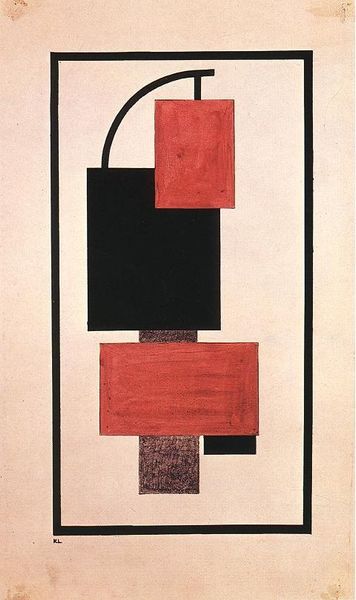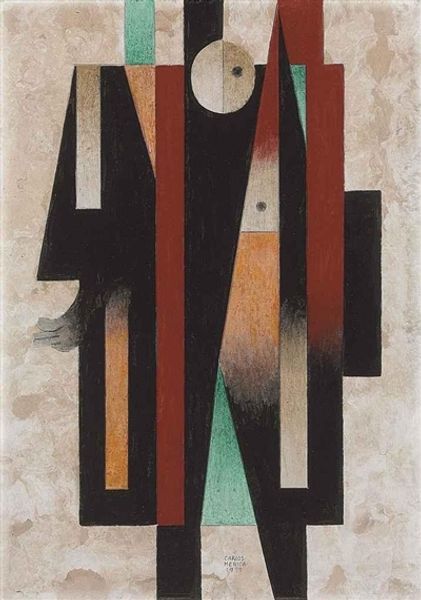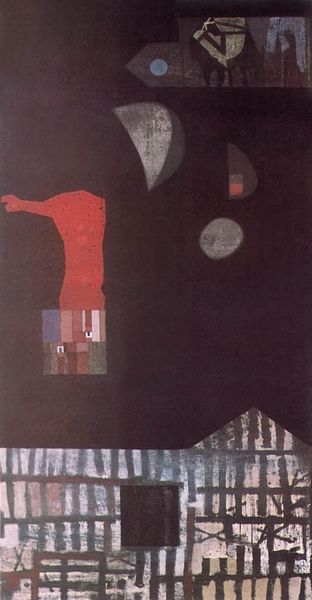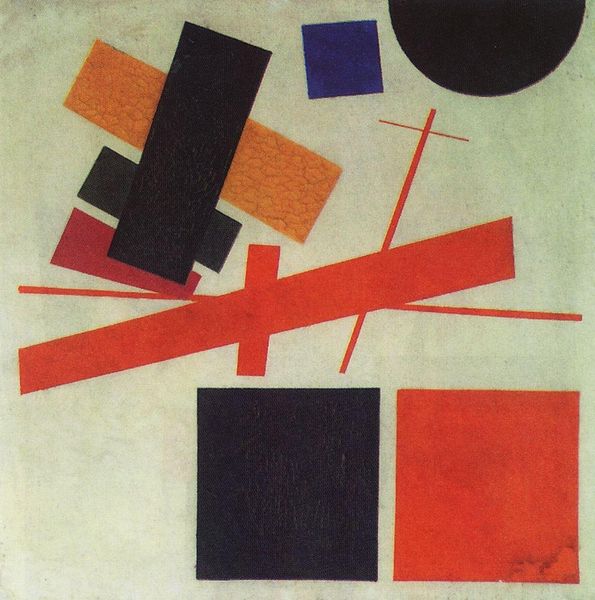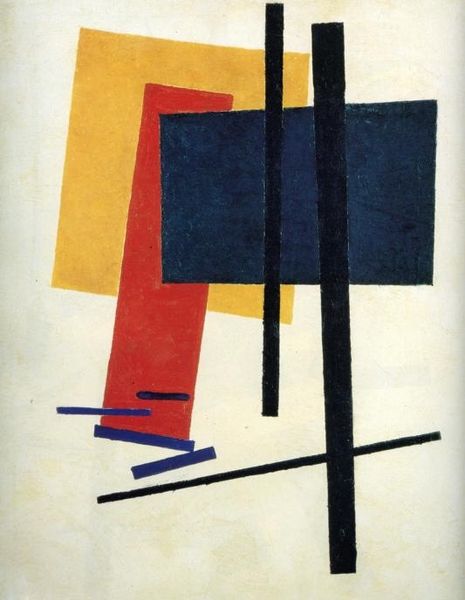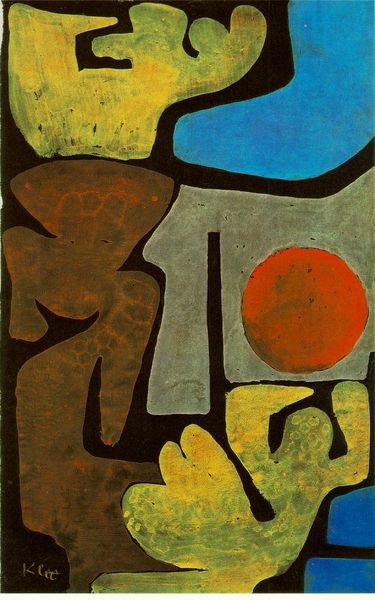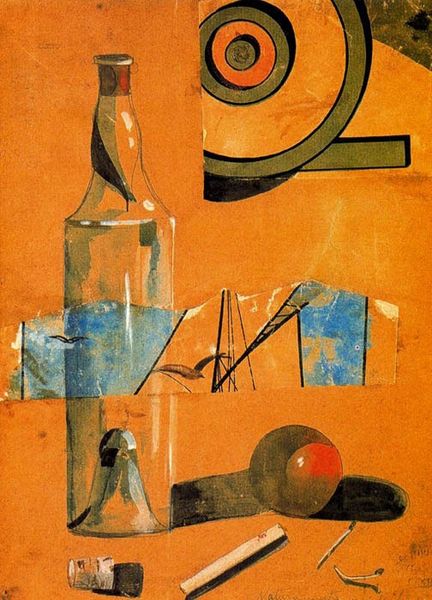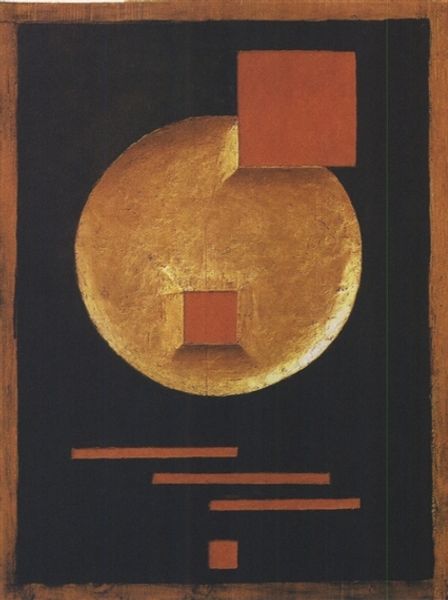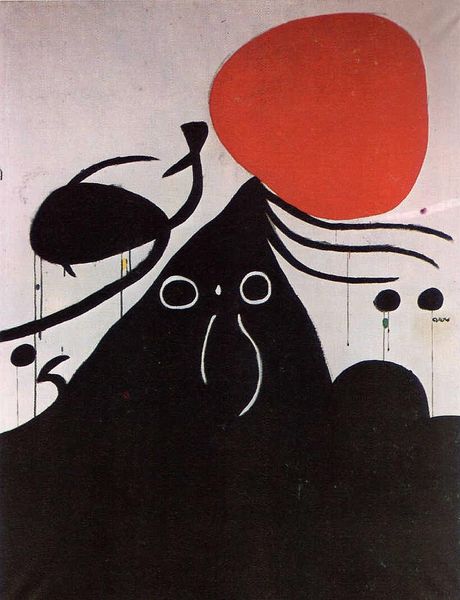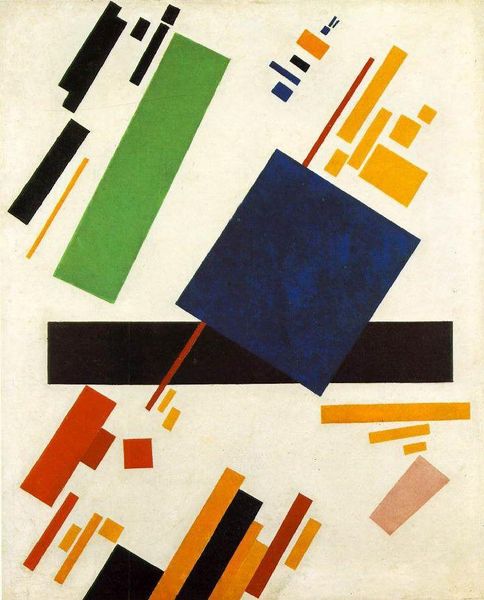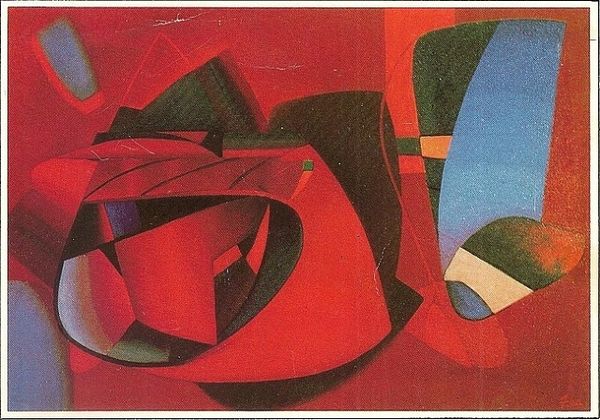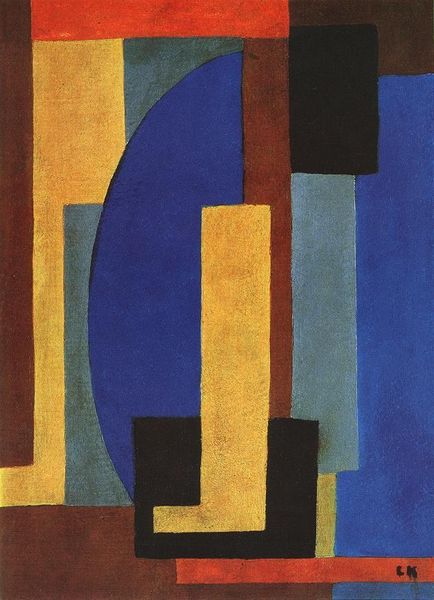
#
acrylic
#
abstract painting
#
physical art
#
painted
#
possibly oil pastel
#
oil painting
#
neo expressionist
#
acrylic on canvas
#
spray can art
#
paint stroke
Copyright: Carlos Merida,Fair Use
Editor: This is Carlos Merida’s “Ventana al infinito”, or “Window to Infinity,” painted in 1972. It seems to be acrylic on canvas. The composition, with its geometric shapes, has this sort of controlled, almost architectural feel to it. What do you see in this piece? Curator: Considering Mérida's background and the sociopolitical climate of Latin America at the time, this abstract window could be interpreted as a subtle form of social commentary. Notice the sharp lines juxtaposed with the softer, almost dreamlike quality of the colors. Could the “infinity” be an idealized vision contrasted against a rigid social structure? Editor: That’s a compelling idea. So you’re seeing the formal elements, the hard lines versus soft colors, as reflecting social tensions? Is the “window” part of a larger Latin American trend of artists pushing boundaries under oppressive regimes? Curator: Precisely. The rise of abstract art in Latin America, especially during periods of political unrest, provided a space for artists to critique power structures and express dissent in ways that might evade censorship. The ambiguous symbolism here could invite viewers to question the world around them. Does this reading change your initial impression of the piece? Editor: Definitely! I was stuck on the formal qualities, but now it feels much more loaded with meaning. I hadn't considered how abstraction itself could be a form of protest. Curator: Indeed. And remember that museums and galleries, by exhibiting such works, also participated in these dialogues, albeit sometimes cautiously. Art became a contested space. Editor: I never really thought about museums playing that kind of role. Now I am seeing how deeply historical and political context can influence even abstract works. Thanks! Curator: My pleasure! Thinking about these contexts adds a rich layer to our experience.
Comments
No comments
Be the first to comment and join the conversation on the ultimate creative platform.

